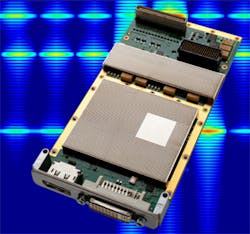Library optimized for use on GPUs
Software vendor RunTime Computing Solutions (RTCS; Birmingham, AL, USA) has formed a partnership with Tech Source (Altamonte Springs, FL, USA) to optimize its VSI/Pro GPU math and signal processing library for use on Tech Source's Condor 3000 GPU boards.
Tech Source's Condor 3000 boards -- which are based on the AMD Radeon E6760 GPU and natively support the OpenCL programming language -- are designed for applications such as image analysis, radar, sonar, and video surveillance.
"We partnered with RunTime as we wanted to make it easy for customers using our boards to develop GPGPU applications in OpenCL. Early benchmark tests demonstrate that using RunTime's VSI/Pro GPU on our boards speeds the development process significantly and enables engineers to be up and running with their GPGPU (General Purpose Graphics Processing Units) applications in hours rather than weeks," says Selwyn Henriques, President and CEO of Tech Source.
RunTime Computing Solutions' VSI/Pro GPU math and signal processing library is fully compliant with the VSIPL (Vector, Signal, and Image Processing Library) standard set forth by the VSIPL Forum. VSIPL is an open standard that provides an API (Application Programming Interface) to a library of scalar, vector, linear algebra, matrix and signal processing functions.
VSI/Pro is optimized to take advantage of single-instruction, multi-data (SIMD) operations on the processors that support Altivec and SSE instruction sets. These are the popular G4, G5, Intel Xeon and AMD Opteron processors that are common to both embedded and cluster computing environments.
Based on the VSIPL specification, the library supports a range of signal processing and linear system functions including 1D, 2D and 3D FFTs, 1-D and 2-D convolutions and correlations, both FIR and IIR filters and windowing functions (Hanning, Chebyshev, Blackman and Kaiser).
Recent articles on GPUs that you might also be interested in reading.
1. GPUs to determine patient exposure to radiation from imaging
Researchers at Rensselaer Polytechnic Institute (Troy, NY, USA) aim to harness the power of GPUs in commercial graphics cards to help determine a patient’s exposure to radiation from x-ray and CT imaging scans.
2. Accelerating morphological operators using GPUs
Researchers at the Lulea University of Technology (Lulea, Sweden) led by associate professor Matthew Thurley are involved in a project to improve the existing software in the Compute Unified Device Architecture (CUDA) image processing library by reducing the processing times of the morphological operators erosion and dilation.
3. Researchers compare multicore programming methodologies
Researchers at the Department of Computer and Information Science at Linköping University (Linköping, Sweden) have recently evaluated the effectiveness of OpenCL for programming multicore CPUs in a comparative case study with OpenMP and Intel Threading Building Blocks.
-- Dave Wilson, Senior Editor, Vision Systems Design
